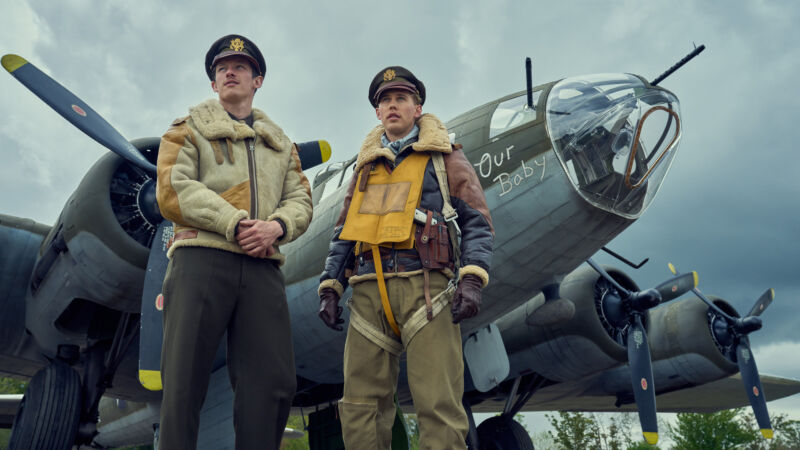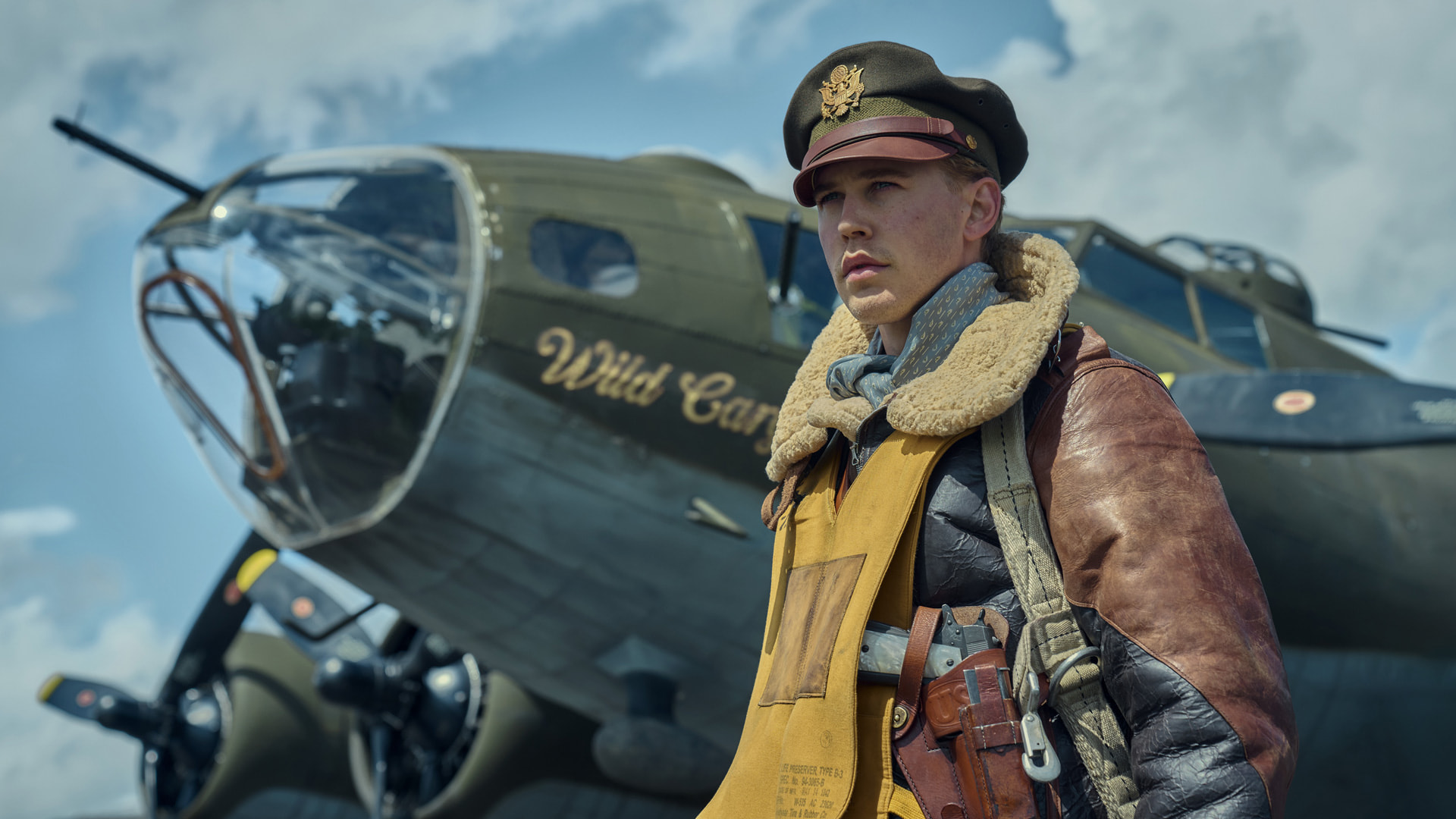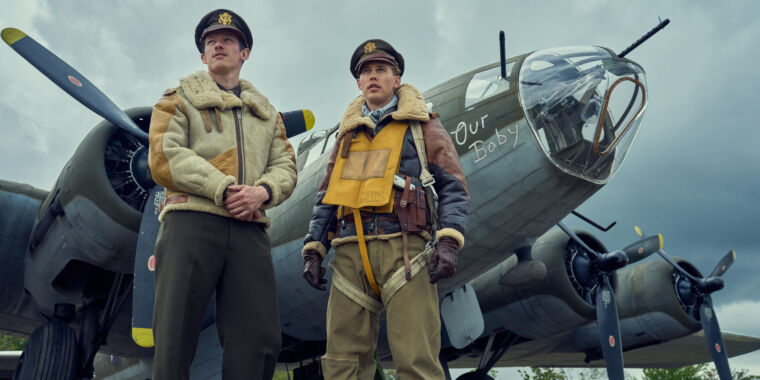Masters of the Air: Imagine a bunch of people throwing up, including me
Masters of People Vomiting Everywhere —
It’s a bad show. I wanted to love it, but it’s just not good.

Enlarge / Our two main heroes so far, Buck and Bucky. Or possibly Bucky and Buck. I forget which is which.
I’m writing this article under duress because it’s not going to create anything new or try to make the world a better place—instead, I’m going to do the thing where a critic tears down the work of others rather than offering up their own creation to balance the scales. So here we go: I didn’t like the first two episodes of Masters of the Air, and I don’t think I’ll be back for episode three.
The feeling that the show might not turn out to be what I was hoping for has been growing in my dark heart since catching the first trailer a month or so ago—it looked both distressingly digital and also maunderingly maudlin, with Austin Butler’s color-graded babyface peering out through a hazy, desaturated cloud of cigarette smoke and 1940s World War II pilot tropes. Unfortunately, the show at release made me feel exactly how I feared it might—rather than recapturing the magic of Band of Brothers or the horror of The Pacific, Masters so far has the depth and maturity of a Call of Duty cutscene.

Enlarge / Does this man look old enough to be allowed to fly that plane?
Apple
World War Blech
After two episodes, I feel I’ve seen everything Masters has to offer: a dead-serious window into the world of B-17 Flying Fortress pilots, wholly lacking any irony or sense of self-awareness. There’s no winking and nodding to the audience, no joking around, no historic interviews with salt-and-pepper veterans to humanize the cast. The only thing allowed here is wall-to-wall jingoistic patriotism—the kind where there’s no room for anything except God, the United States of America, and bombing the crap out of the enemy. And pining wistfully for that special girl waiting at home.
Butler clearly gives a solid performance, but the man’s face is too perfect, like an Army Air Corps recruiting poster, with his tall hair and his cap parked jauntily at an angle atop it. He’s pretty to the point of being a distraction in every single scene he’s in. He noted in interviews that he signed up to work with a dialect coach to drop the Elvis accent he picked up while filming with Baz Luhrmann, and being notionally a cowboy from Casper, Wyoming, he wears his character’s “well, aw, shucks” down-home attitude as comfortably as the silk aviator’s scarf around his neck. But at least to this native Texan’s ear, there’s still a lot of Memphis coming out of the man’s mouth.
Every member of the cast has their 1940s-ness dialed up to 11—and perhaps that’s appropriate, given that World War II ended 80 years ago and “World War II” is fully a period aesthetic at this point, with its own rules and visuals any audience will expect to see. But the show wastes no opportunity to ram home that ’40s feeling—every room is dimly lit, and every Allied office feels like a ramshackle clapboard mess. Each scene’s framing feels like it was carefully assembled from comic book clippings, with barely disguised CGI trickery to keep everything hanging together. Watching in 4K HDR was beautiful, but it also made me cringe repeatedly whenever a VFX shot with bad tracking or bad color matching would flash past. There’s just nowhere to hide the digital-ness of it all, and boy, does it ever shine through. The overall effect is less like Saving Private Ryan and more like Sucker Punch—with a bit of Sky Captain and the World of Tomorrow thrown in.
Masters of the Air: Imagine a bunch of people throwing up, including me Read More »
